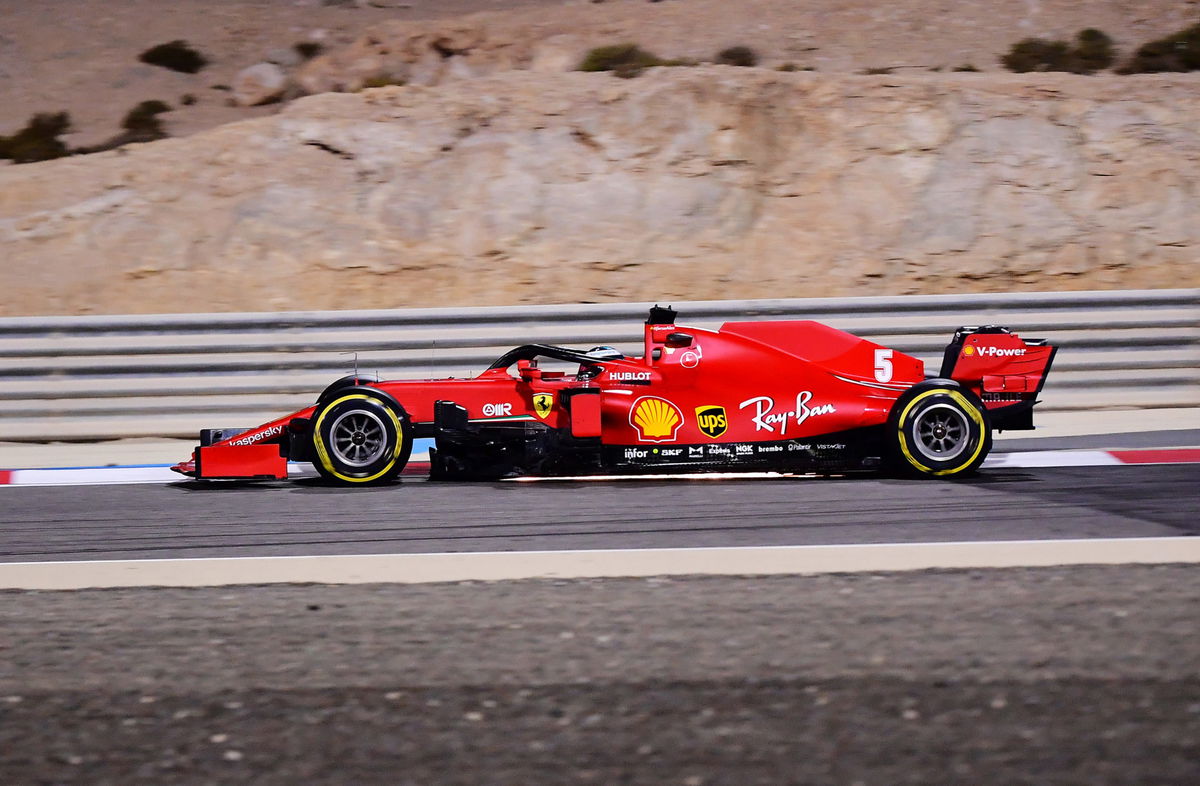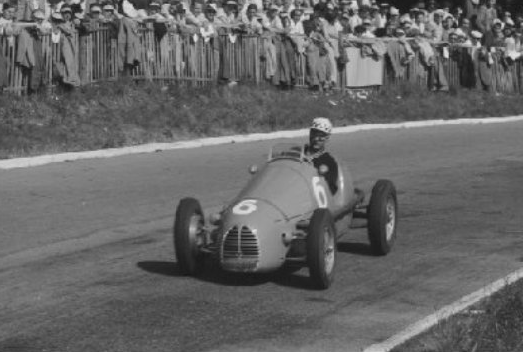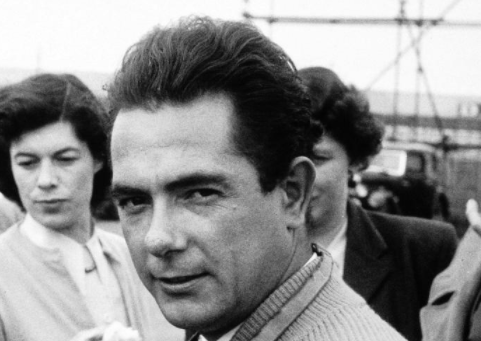
Getty
BAHRAIN, BAHRAIN – DECEMBER 06: Sebastian Vettel of Germany driving the (5) Scuderia Ferrari SF1000 on track during the F1 Grand Prix of Sakhir at Bahrain International Circuit in Bahrain, Bahrain. (Photo by Giuseppe Cacace – Pool/Getty Images)

Getty
BAHRAIN, BAHRAIN – DECEMBER 06: Sebastian Vettel of Germany driving the (5) Scuderia Ferrari SF1000 on track during the F1 Grand Prix of Sakhir at Bahrain International Circuit in Bahrain, Bahrain. (Photo by Giuseppe Cacace – Pool/Getty Images)
During the formative years of F1 in the 1950s, all sorts of crazy things happened. Fatal crashes occurred every other race weekend, different teams brought in different car designs and amateurs drove the cars with little experience. But one such incident occurred in 1951 that is a piece of legend even today.
Watch What’s Trending Now!
We are going way back to the 1951 Italian Grand Prix, which took place at the Monza circuit.
Maurice Trintignant is a regular joe who is taking part with the Simca-Gordini team. Having qualified 12th on the grid, he starts to feel under the weather on the race day. Soon, he informs team principal and owner Amédée Gordini of his inability to get behind the wheel of the car.
ADVERTISEMENT

ADVERTISEMENT
So, what does Gordini do – start the race with just one car or call in a late replacement for the unwell Trintignant and incur an extra fee payment?
He does neither; he calls in the aspiring French driver Jean Behra to come to their rescue.
ADVERTISEMENT
Without informing the race organizers, Gordini secretly replaces Trintignant with Behra, who enters by using the former’s name for the race day. But how does he do it with no one noticing?
On his way to the grid, Behra wears Trintignant’s distinct helmet design besides using his #50 Simca-Gordini car. And so the race begins, with Behra, Trintignant to the larger audience, cruising in 10th place. However, his engine blows up in lap 29 and he has to settle for a DNF while Alberto Ascari’s Ferrari takes the checkered flag.
Read More – Can F1 Teams Have 3 Drivers?
ADVERTISEMENT
Did the race organizers punish Gordini F1 team and Behra later?
The officials discovered the plot soon after the race. But since Behra did not finish the race, the Frenchman and his team did not face any sanctions at all for their malicious tactics. Imagine doing something anywhere close to that today in F1 and they would face the ultimate punishment from the FIA.
ADVERTISEMENT

The Gordini racing team handed Behra his official F1 debut next season in1952. However, his career did not take flight until he joined Maserati in 1955. His impressive haul of five podiums earned him a dream Ferrari drive in 1959.
ADVERTISEMENT
Continuing the trend of enigmatic behavior, he punched team manager Romolo Tavoni after a race. After being dismissed, he joined the Porsche team. Unlike today, most drivers were not so lucky to see the days of their retirement while sipping tea in a countryside home.
Top Stories
Who Is Oscar Piastri’s Father, Chris Piastri? Co-Founder of Multibillion Dollar Automotive Company

Who Is Lando Norris’ Girlfriend? Everything You Need to Know About Margarida Corceiro

Where Does Max Verstappen Live Stream?

Who Are Lando Norris’s Parents? Meet Adam Norris and Cisca Wauman

Hollywood Star Not Holding Back Against Zak Brown in Lando Norris Championship Fiasco

Behra fatally crashed his Porsche car at the German Grand Prix in Berlin. He was thrown from his car and hit a flagpole nearby, fracturing his skull and dying instantly.
ADVERTISEMENT
This tale truly epitomizes the good and the ugly of the 1950s era of racing; filled with charismatic personalities while having little regard for human life.
ADVERTISEMENT
Read More – What Is the F1 ‘Halo’ System That Saved Romain Grosjean’s Life in Bahrain?
ADVERTISEMENT
ADVERTISEMENT
ADVERTISEMENT

